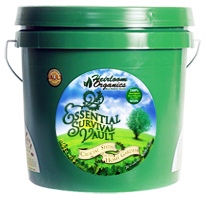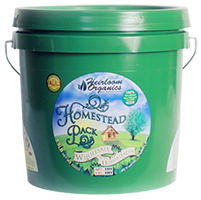|
Home > Guides > Vegetables > Cabbage |
|
How to Grow Cabbage | Guide to Growing Cabbage |
|
|
|
|
| |
|
|
| |
|
| |
Overview This cool-season crop grows best when daytime temperatures are in the 60s F. Direct-seed or transplant spring crops for fresh use in summer. Plant fall crops for winter storage or sauerkraut. |
|
| |
|
|
| |
Growing Guide
GROWING NOTES
Can tolerate light shade but will slow maturity. Light shade can be beneficial in warm weather.
Prefers well-drained, fertile soil high in organic matter, pH 6.0 to 7.5. Can tolerate slightly alkaline soil. This heavy feeder also needs plentiful, consistent moisture.
Biennial grown as an annual.
Requires good soil, timely planting and protection from pests.
Some green varieties have a bluish cast.
MAINTAINING
Sow seeds indoors 6 to 8 weeks before average last spring frost. Keep soil warm (about 75 F) until germination. Then keep plants around 60 F. Provide direct sun so plants don’t get leggy. When plants are 4 to 6 weeks old, transplants into garden 12 to 24 inches apart, in rows 18 to 34 inches apart. Use closer spacings for smaller, early varieties, wider spacings for larger, late-season varieties.
Can be direct seeded as soon as you can work the soil. Will germinate at soil temps as low as 40 F. Plant ½ to ¾ inch deep, about 3 inches apart. Thin to final spacings.
Direct seed in summer for fall crop, or start transplants in late May and transplant in late June or early July.
Plants have shallow root systems. Avoid even shallow cultivation. Mulch to protect roots, reduce weed competition and conserve moisture.
Use floating row cover to protect crop from early pests.
When heads are mature, they are prone to splitting in response to any stress or a rain following a dry period. Avoid splitting by choosing varieties that resist splitting, spacing plants close together (8 to 12 inches for early varieties, 12 to 16 inches for later varieties), using shovel to sever roots on one side about 6 inches from the plant, or twisting plants after heads have firmed to break some of the roots.
To help reduce disease, do not plant cabbage or other cole crops in the same location more than once every three or four years.
When cabbages are 4 to 5 inches tall, thin or transplant to stand 18 to 24 inches apart. Apply a thick layer of mulch to retain moisture. Water plants during the summer if rainfall is less than 1 inch per week. Contact your local county extension office for controls of common cabbage pests such as aphids, root maggots, cabbageworms, and cabbage loopers.
|
|
| |
|
| |
Heirloom seeds are the gardeners choice for seed-saving from year-to-year. Learning to save seeds is easy and fun with these books. Before you harvest, consider which varieties you might want to save seeds from so that your harvesting practice includes plants chosen for seed saving. Be sure to check out our newest seed packs, available now from Heirloom Organics. The Super Food Garden is the most nutrient dense garden you can build and everything you need is right here in one pack. The Genesis Garden s a very popular Bible Garden collection. The Three Sisters Garden was the first example of companion planting in Native American culture. See all of our brand-new seed pack offerings in our store.
|
|
| |
|
|
| |
Harvesting Guide
HARVESTING
Cabbage can be harvested anytime after the heads form. For highest yield, cut the cabbage heads when they are solid (firm to hand pressure) but before they crack or split. When heads are mature, a sudden heavy rain may cause heads to crack or split wide open. The exposed internal tissue soon becomes unusable. Harvest and salvage split heads as soon as possible after they are discovered.
In addition to harvesting the mature heads of the cabbage planted in the spring, you can harvest a later crop of small heads (cabbage sprouts). These sprouts develop on the stumps of the cut stems. Cut as close to the lower surface of the head as possible, leaving the loose outer leaves intact. Buds that grow in the axils of these leaves (the angle between the base of the leaf and the stem above it) later form sprouts. The sprouts develop to 2 to 4 inches in diameter and should be picked when firm. Continue control of cabbage worms and other pests. If this control cannot be maintained, remove and destroy or compost the stumps, because they serve as a breeding ground for diseases and insect pests.
SAVING SEEDS
This is a two-year project, and also the chance that your prize cabbage variety will swap pollen with both other cabbages and cabbage family relatives. Keep plant intended for seed at least 300 feet from them. Use a loose mulch to help plant overwinter, or in colder zones, unearth the plant, roots and all, and keep them indoors on a cool, humid spot for setting out in the spring. In the second year, you can help the flower stalk to come forth by slashing an X in the top of each cabbage's head. Wait until the seed heads turn brown before collecting the seeds.
Once they start to dry, keep a close eye on them, as they tend to shatter and drop their seed. Its best to cut entire plants once most of the pods begin to look dry, and then leave them to mature further on a sheet indoors. Once they are thoroughly dry, the seeds will come out of the pods very easily; the simplest way is to trample the plants on top of a large sheet, and then sieve out the debris.
|
|
| |
|
|
|
| |
|
|
|
|
|
| You can find this variety in the following Seed Packs: |
|
  
   |
|
| Click the packs below to see some of our other wonderful products |
|
|
|
|
|
|
|